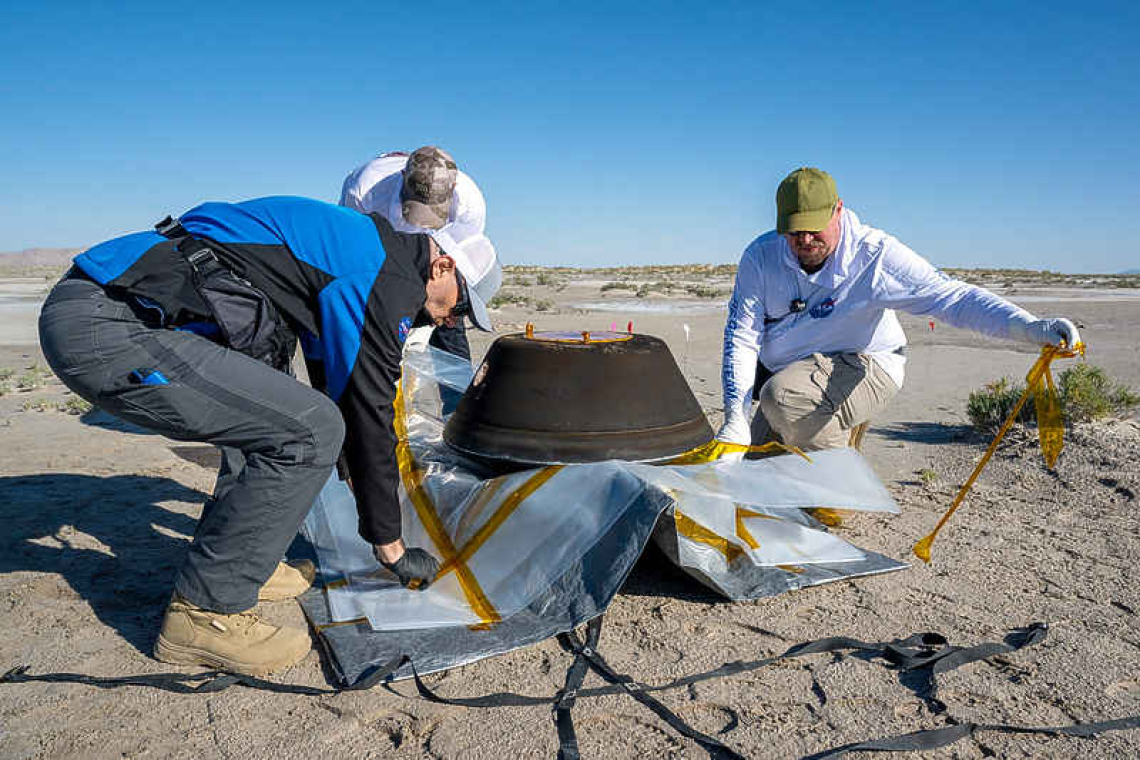The return capsule containing a sample collected from the asteroid Bennu in October 2020 by NASA’s OSIRIS-REx spacecraft is seen shortly after touching down in the desert at the Department of Defense's Utah Test and Training Range in Dugway, Utah, U.S, on Sunday. (NASA/Keegan Barber/Handout via Reuters)
SALT LAKE CITY--A NASA space capsule carrying the largest soil sample ever scooped up from the surface of an asteroid streaked through Earth's atmosphere on Sunday and parachuted into the Utah desert, delivering the celestial specimen to scientists.
The gumdrop-shaped capsule, released from the robotic spacecraft OSIRIS-REx as the mothership passed within 67,000 miles (107,826 km) of Earth hours earlier, touched down within a designated landing zone west of Salt Lake City on the U.S. military's vast Utah Test and Training Range. The final descent and landing, shown on a NASA livestream, capped a six-year joint mission between the U.S. space agency and the University of Arizona. It was only the third asteroid sample, and by far the biggest, ever returned to Earth for analysis, following two similar missions by Japan's space agency ending in 2010 and 2020. After touchdown, the capsule laid nose-down on the sandy floor of the Utah desert, a red-and-white parachute that slowed its high-speed descent resting just feet away after detaching. After some doubt about whether a preliminary chute properly deployed, the main chute unfurled as planned, bring the capsule to a soft and nearly flawless landing.
"We heard 'main chute detected,' and I literally broke into tears," Dante Lauretta, a University of Arizona scientist who has been involved in the project since its origin and watched the descent from a helicopter, told a press conference. Tim Prizer, a Lockheed Martin engineer on the project, said, "we touched down as soft as a dove." OSIRIS-REx collected its specimen three years ago from Bennu, a small, carbon-rich asteroid discovered in 1999.
The space rock is classified as a "near-Earth object" because it passes relatively close to our planet every six years, though the odds of an impact are considered remote. Apparently made up of a loose collection of rocks, like a rubble pile, Bennu measures just 500 meters (547 yards) across, making it wider than the Empire State Building is tall but tiny compared with the Chicxulub asteroid that struck Earth some 66 million years ago, wiping out the dinosaurs.







